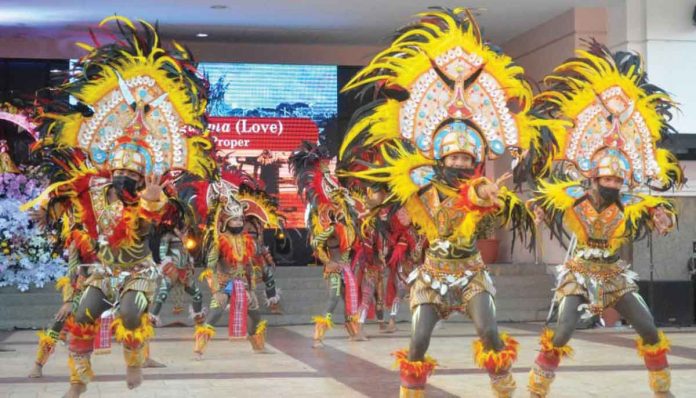
BY GLENDA TAYONA
ILOILO City – Next year’s staging of the Iloilo Dinagyang Festival will no longer be digital but a face-to-face celebration.
Mayor Jerry P. Treñas said Ilonggos will start the first month of 2023 with a bigger and livelier celebration of faith on the streets of this southern city.
“It is high time we go back to the streets and exclaim ‘Viva! Viva! Señor Sto. Niño!’” Treñas posted in his Facebook page.
Iloilo Festival Foundation Inc. (IFFI) executive director Joyce Clavecillas said they are “50 to 70 percent done” preparing for face-to-face Dinagyang 2023 set from Jan. 13 to 22.
For the past two years, Dinagyang was celebrated virtually because of the coronavirus disease 2019 (COVID-19) pandemic.
Clavecillas said all pre-pandemic Dinagyang activities will be revived such as the ati-ati tribe competition, float parade, food festival, liturgical activities, and religious sadsad, among others.
One of the goals of Dinagyang Festival 2023 is to highlight the gratefulness of the Ilonggos to Señor Sto. Niño, according to Clavecillas.
She also said public health safety protocols set by the government by the time the festival is staged will be observed.
Dinagyang Festival had its early beginnings in 1968. A replica of the image of Señor Sto. Niño was brought from Cebu City to the San Jose Parish Church by Father Suplico Ebderes, OSA, with a delegation of Cofradia del Sto. Niño, Cebu members.
The image and party were enthusiastically welcomed by then parish priest of San Jose Church, Father Ambrosio Galindez, OSA, then Mayor Renerio Ticao, and the devotees of the Sto. Niño in Iloilo City.
The image was brought to San Jose Parish Church and enshrined there up to this time, where a novena in His honor is held every Friday.
The first parish feast of Señor Sto. Niño was celebrated in 1969, a year after his arrival in Iloilo City. The culmination of the nine-day novena was the fluvial procession.
In the early morning light of dawn, the revered Sto. Niño image was borne on a decorative banca in a fluvial procession, starting from the mouth of the Iloilo River at Fort San Pedro, winding all the way to the Iloilo Provincial Capitol which stood on the bank of the Iloilo River.
The year 1976 also brought another feature of the festival. Street revelry and audience participation were introduced and encouraged.
At that point, the Sto. Niño was met by the Hermano-Hermano Mayor, devotees, and ati-atihan tribes. With the Sto. Niño leading, the foot procession started, passing through the main streets of the city and ending up at the San Jose Church, where a high mass was then celebrated.
Every year since then, the image is venerated through religious celebration, with the ati-atihan tracing its roots to the barter or purchase of Panay Island by the 10 Bornean datus from the Ati King, Marikudo, in the 13th century.
From 1969, the celebration was casually called ati-atihan and to differentiate it from that of Kalibo, Aklan was specified as “Iloilo Ati-atihan” until it was renamed “Dinagyang”.
The root word is dagyang, Hiligaynon for “to make merry”. Dinagyang is the present progressive word meaning making merry or merry-making./PN



